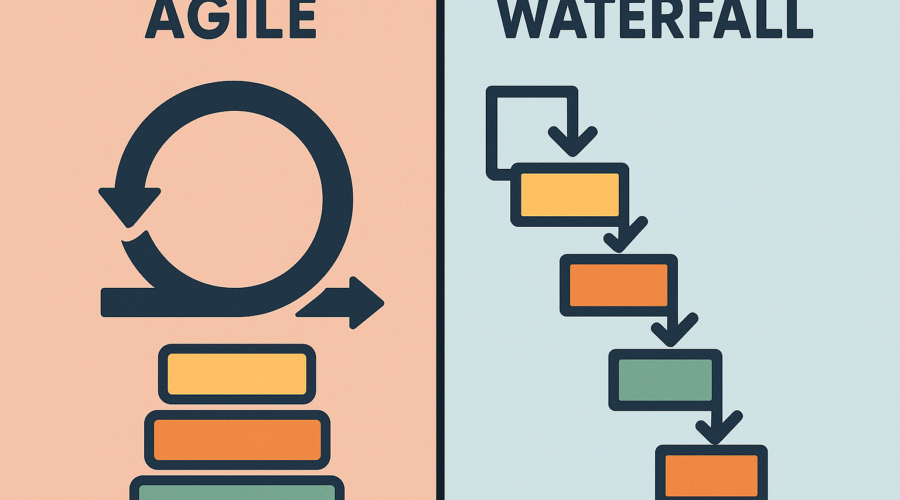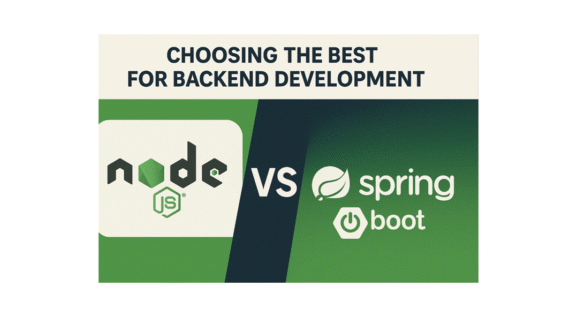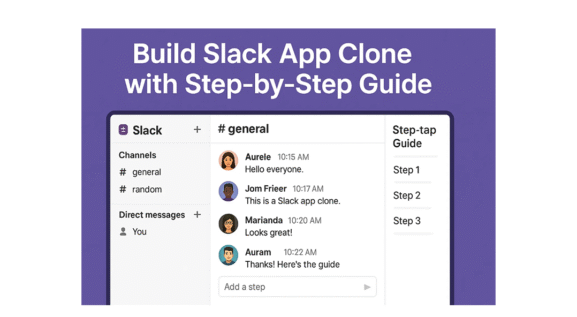Agile vs. Waterfall: Choosing the Right Project Management Methodology
Quick Summary: Choosing the right project management methodology is a pivotal decision that affects how your team collaborates, adapts, and delivers. Agile, with its flexibility and iterative approach, is ideal for fast-paced industries like technology and startups. In contrast, Waterfall provides structure and predictability, making it the best choice for well-defined projects in sectors like construction and manufacturing.
Agile and Waterfall are the two most widely used methodologies, each offering distinct advantages. 71% of organizations have adopted Agile for its adaptability, making it perfect for projects that require frequent adjustments and innovation. It allows teams to quickly adjust and release value incrementally.
On the other hand, Waterfall is preferred in industries that require detailed upfront planning and where deliverables must meet strict standards. Its step-by-step process ensures that milestones are met with precision, making it a staple for regulated and large-scale projects.
So, which methodology works best for your business? In this blog, we’ll explore the core differences between Agile and Waterfall, helping you determine which approach aligns best with your project goals and organizational needs.
The Basics of Agile and Waterfall
What is Agile?
Agile is an iterative, flexible project management methodology that focuses on adaptive planning, collaboration, and delivering value incrementally. Teams work in short cycles called sprints, producing usable deliverables with each iteration.
Key Features:
- Incremental Delivery: Work is divided into manageable units, allowing for continuous delivery of working solutions, which reduces time-to-market.
- Regular Feedback Loops with Stakeholders: Agile encourages consistent stakeholder involvement through sprint reviews and demos, helping ensure the product is aligned with user expectations.
- Cross-Functional Teamwork and Continuous Improvement: Agile promotes collaboration across different roles (developers, testers, designers) and emphasizes ongoing improvement through retrospectives after each sprint.
Typical Use Cases:
- Software Development Projects: Agile is especially popular in tech environments where software requirements frequently change.
- Startups Needing to Pivot Quickly: Agile is ideal for startups with uncertain requirements or rapidly changing markets.
- Initiatives with Evolving or Unclear Requirements: Projects that require adaptability and frequent client feedback benefit from Agile methodologies.
As per the State of Agile Report 2023, it’s increasingly adopted by organizations looking for a flexible framework to respond to changing requirements and deliver value continuously.
Discover top Agile experts to bring your project to life.
Top Mobile App Development Companies
What is Waterfall?
Waterfall is a linear, structured approach to project management where each phase is completed before the next begins. It focuses on upfront planning, clear deliverables, and strict adherence to timelines.
Key Features:
- Detailed Requirements Gathered at the Start: Comprehensive requirements are documented at the beginning, serving as the blueprint for the entire project.
- Defined Phases: The project proceeds through clear and well-defined phases: Requirements, Design, Implementation, Testing, and Deployment.
- Comprehensive Documentation at Each Stage: Waterfall relies on exhaustive documentation at each stage, ensuring clarity and traceability throughout the project.
Typical Use Cases:
- Construction and Manufacturing Projects: Waterfall’s structured nature fits well in industries where physical construction or hardware development needs careful, detailed planning.
- Large-Scale Infrastructure Development: Waterfall is ideal for projects like building bridges or roads where each phase must be completed sequentially.
- Projects with Fixed Budgets and Clear, Unchanging Requirements: If project requirements are unlikely to change, Waterfall provides the clarity needed to ensure alignment with budget and timelines.
Waterfall remains the preferred approach in industries where predictability and strict regulatory compliance are required, such as construction and defense.
Find experienced Waterfall specialists for structured delivery.
Top Software Development Companies
Key Differences Between Agile and Waterfall
When choosing between Agile and Waterfall, understanding the key differences between the two methodologies can help you determine which is best suited for your project. While both approaches have their strengths, they differ fundamentally in how they handle planning, flexibility, collaboration, feedback cycles, and documentation.
- Project Planning: Agile involves minimal upfront planning, evolving throughout the project, while Waterfall requires extensive upfront planning with a clear, linear structure.
- Flexibility: Agile is highly adaptive to changes and feedback, whereas Waterfall is rigid once the project starts, making changes difficult.
- Team Collaboration: Agile fosters frequent interaction and daily syncs for continuous collaboration, while Waterfall limits collaboration to defined roles and specific project phases.
- Feedback Cycles: Agile offers continuous, client-driven feedback after each iteration, while Waterfall provides feedback primarily at the end of each phase or after project completion.
- Documentation: Agile maintains lightweight, “just enough” documentation, whereas Waterfall emphasizes detailed and comprehensive documentation at each stage.
Quick Overview:
| Aspect | Agile | Waterfall |
| Project Planning | Minimal upfront, iterative planning | Extensive upfront planning |
| Flexibility | High, adaptive to changes | Low, rigid once initiated |
| Team Collaboration | Frequent interaction, daily syncs | Defined roles, limited collaboration |
| Feedback Cycles | Continuous, client-driven | Final product feedback or stage-end |
| Documentation | Lightweight, “just enough” | Comprehensive and detailed |
Business Implications: Agile or Waterfall?
Impact on Time-to-Market
Agile methodologies help accelerate delivery by allowing teams to release iterative versions of the product. This continuous cycle of development and testing enables teams to get feedback quickly and make necessary adjustments, significantly reducing time-to-market. In contrast, Waterfall has longer cycles, with deliverables often only available at the end of the project, which can delay the product’s release and time-to-market.
Example: Mobile development companies use Agile’s rapid iteration process to deliver updates based on real-time customer feedback.Waterfall, however, would require a more structured and linear approach, delaying the adaptation to new trends or user feedback until later stages of development.
Cost Considerations
While Agile allows flexibility to make adjustments throughout the project, it requires careful scope management to avoid budget overruns due to the ongoing iterations and potential scope creep. In contrast, Waterfall ensures deliverables are prepared in a structured, sequential manner, often leading to greater predictability in large-scale projects.
Example: Agile is particularly useful in mobile app development, where continuous improvement and regular feedback help optimize resource allocation. Waterfall, with its rigid structure, can lead to higher costs if the project’s scope or requirements change after significant work has been completed.
Risk Management
Agile’s iterative approach means risks are identified and mitigated early in the development process, allowing for continuous course corrections. This enables teams to quickly adjust and reduce the impact of potential issues. On the other hand, Waterfall typically identifies and addresses risks upfront during the planning phase, making it more difficult to react quickly if problems arise during the later stages of the project.
Example: In an Agile environment, a development team working on a new feature can adjust quickly based on testing feedback, minimizing the impact of potential risks. With Waterfall, however, if a risk emerges late in the process, it may lead to delays or significant rework, as changes are harder to implement once the project is in the later stages.
Which Methodology is Right for Your Organization?
When Agile Works Best
- Projects with complex or rapidly changing requirements
- Teams in fast-paced, innovative industries like tech or startups
- Projects needing continuous feedback from customers
Agile is particularly valuable in sectors like software engineering and tech, where changes are frequent and the ability to adapt quickly is crucial to success.
When Waterfall Works Best
- Projects with well-defined and stable requirements
- Industries such as construction, manufacturing, and defense
- Projects with fixed budgets and timelines
In industries like construction, where precise planning and adherence to regulations are critical, Waterfall’s structured approach ensures that projects remain on track and meet necessary compliance standards.
Case Studies: Real-World Applications
Case 1: A Tech Startup Leveraging Agile
Example: Spotify
Spotify uses Agile to stay competitive in the fast-paced tech industry. Through bi-weekly sprints, they quickly release updates based on user feedback, allowing the product to evolve and meet customer demands. This iterative process helps Spotify stay flexible and responsive to change.
Case 2: Infrastructure Project with Waterfall
Example: Sydney Opera House
The Sydney Opera House followed a Waterfall approach due to its complex design and strict regulatory requirements. The project’s structured, step-by-step planning ensured clear deliverables, budget adherence, and timely completion, making Waterfall the ideal method for this large-scale infrastructure project.
The Hybrid Approach: Agile-Waterfall Combination
Some organizations opt for a hybrid model that combines elements of both Agile and Waterfall, depending on project needs. For example:
- Design Phase with Waterfall: This ensures that initial requirements are clearly defined and agreed upon.
- Execution with Agile: The execution phase follows Agile’s iterative and flexible approach, allowing teams to adapt as the project progresses.
When to Consider Hybrid Models:
- Large, multi-phase projects where some components are predictable (design, architecture) and others evolve (development, testing).
- Projects in industries like IT, where compliance and regulatory constraints require detailed upfront planning, but the development and testing phases benefit from flexibility.
Explore companies blending Agile and Waterfall methods.
Top Hybrid App Development Companies
Key Considerations for Leaders Making the Decision
Cultural Fit
Agile is ideal for organizations that thrive on collaboration, experimentation, and continuous improvement. Waterfall, in contrast, fits organizations that value planning, structure, and predictability.
Scalability
Agile scales well for projects that require cross-functional collaboration across teams. However, Waterfall excels in large-scale projects that demand sequential phases and a clear hierarchy of responsibilities.
Stakeholder Involvement
Agile requires constant involvement from stakeholders to provide feedback and direction, while Waterfall typically involves stakeholders at the beginning and end of the project.
Conclusion: Finding the Right Fit for Your Business
Choosing the right methodology depends on your project’s nature, your team’s strengths, and your organizational needs. Agile shines in environments that require flexibility, speed, and frequent updates, while Waterfall is ideal for projects that demand structure, predictability, and clear milestones.
To make the right choice, evaluate your project priorities, whether adaptability or predictability is more critical and align them with the methodology that suits your goals. Collaborate with stakeholders to ensure everyone is aligned.
Looking for the right company to guide you? Explore a wide range of categories to find the perfect companies tailored to your project needs and methodology preferences.
FAQs:
When should I use Agile instead of Waterfall?
- Agile works best for projects with changing requirements, frequent updates, and ongoing customer feedback, such as software or mobile app development, while Waterfall is suitable for projects with fixed, clear requirements like construction or large-scale infrastructure.
Is Agile suitable for all industries?
- While Agile is popular in tech, software development, and startups, it can be adapted to other industries where flexibility and rapid adaptation are needed. However, it may not be ideal for industries with strict regulatory requirements.
Can Agile and Waterfall be used together?
- Yes, some organizations use a hybrid approach, applying Waterfall for the planning phase and Agile for execution to combine the benefits of both methodologies. This works well for projects that have both predictable and evolving components.
Which methodology is more cost-effective?
- Agile can optimize resource allocation through continuous feedback but requires careful scope management to avoid budget overruns. Waterfall offers more predictable costs upfront but may be less flexible if changes arise during the project.
Which approach is best for startups?
- Agile is often the best choice for startups, as it provides the flexibility needed to quickly adapt to changing customer needs and market conditions.
Is SDLC a Waterfall or Agile?
- SDLC (Software Development Life Cycle) is a framework that can use either Waterfall or Agile methodologies. Waterfall follows a linear, sequential approach, while Agile uses an iterative, flexible process for continuous development and feedback.



